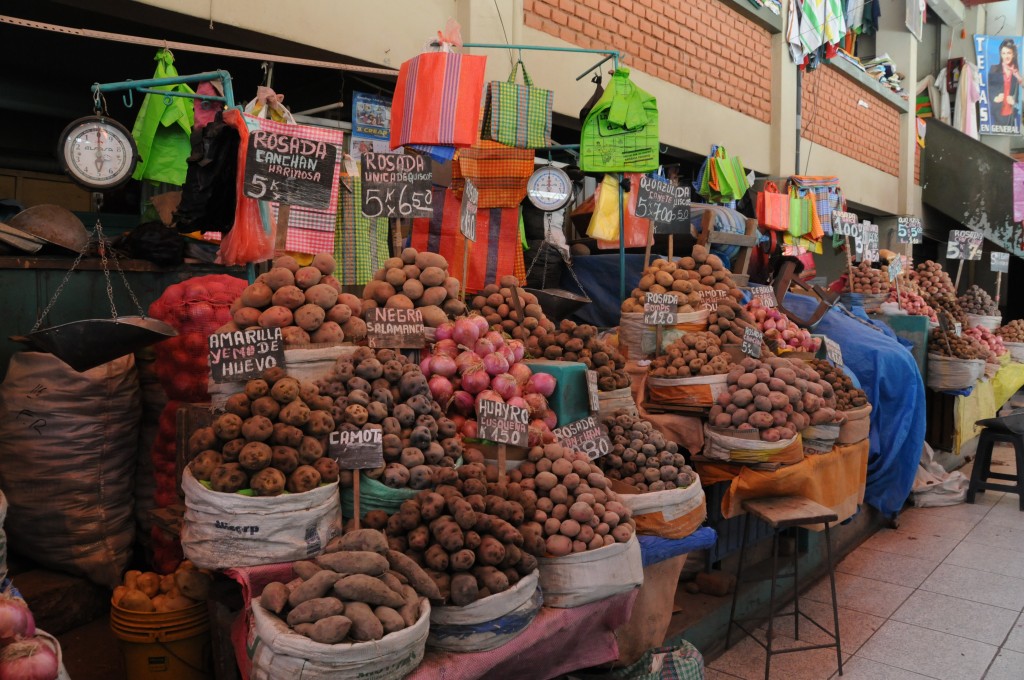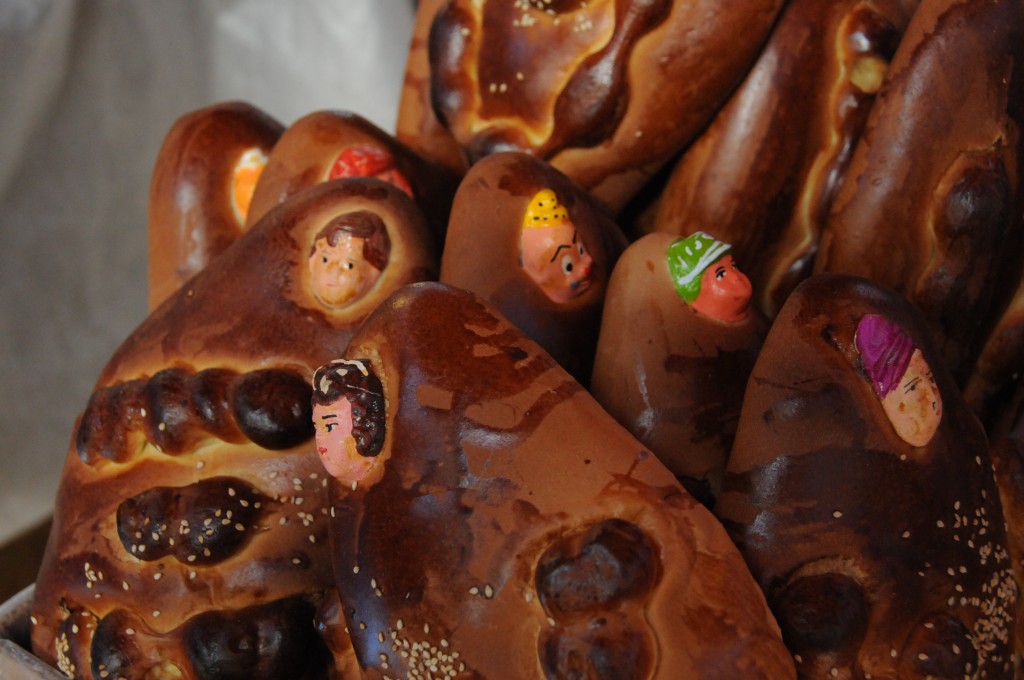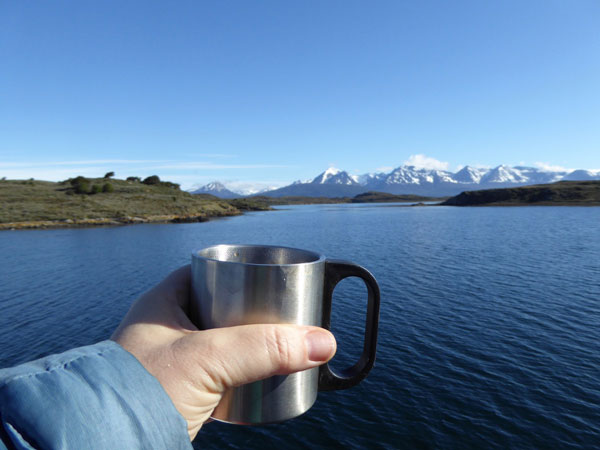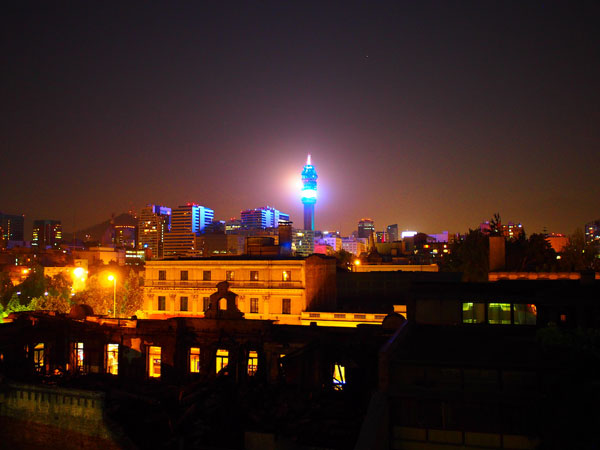One of the hours-or-so I liked best in Arequipa was going to the market. It was a bit of a goofy outing, since I didn’t have a kitchen, and was somewhat concerned about getting some travelers’ ick (which I got in spades, that very night, but it had nothing to do with eating anything at the market), but I love markets, ferias, fairs, etc, any place where you can go and talk to people about food. The market in Arequipa is just one manzana (square block), and I’m sure this is just the central one, and that there are more for people who live in the hills up above Arequipa or down below.
I won’t pretend I’m the first traveler to have ever seen what I saw there at the market, but maybe you’ve never been, or will forgive me repeating some of what you already know. I should have gone on a Saturday morning to get more of the feel of the bustle of the place. As it was, I was there on a sleepy afternoon (some of the sellers were, in fact, sleeping). I had lots of room to move around and people were generally pretty friendly, despite the fact that foreigners galore probably walk through their market on any given day. On this day it was just me though. Marvelling.
Like at the fact that in Peru there are many, many types of potatoes to be had. Where are all of these varieties of potatoes at our local market? And how much better would our potato dishes be if we had a special potato for each one?
And the olives! Why did no one tell me about the olives in Peru? We had olives with almost every meal, and I was happy to eat every one of them. I adore olives. Tasty and salty and perfect on top of papas a la huancaína, which I actually ate surprisingly little of.
And there were these, which I had a great conversation with the woman selling them about, which started with me asking what the name of the vegetable was that looked like a tongue. I asked if I could take a picture of the vegetables, and she said of course, then later asked to see the picture. I’m quite sure that she didn’t want to see the picture, just wanted to see it I’d lied and asked to take a picture of her and her gal pals. I had not. And I present the caihua/caigua. Which is apparently aslo called a stuffing cucumber.
And then there were the chaco people. Chaco is a soft rock (actually dried mud), which comes in chunks, and then they break up with a spoon and sell it in small bags for 1 or 2 soles. It’s good for gastritis, and is dissolved in hot water for consumption. It apparently tastes like a cross between flour and mud, which is not surprising, given that that’s what it is. Here’s a little boy helping his mom fill the bags. I asked if I could take a picture and they tried to pose him, but he wasn’t having it. Smart kid.
There was also lots of cheese, pictured behind these people. There’s a cheese that is pan fried and eaten that was delicious, but I’m not sure which it was. The cheese in Arequipa was generally fissured, crumbly, salty and squeaky. Double plus like.
And the dried frogs. How could you not take pictures of dried frogs? No word on what they were for, but are they ever not what’s on the menu where I’m from. They were in the food section, not the medicinal section (like the chaco), and I asked what they were for, and was told “for soup” but I had a moment of doubt. I definitely never saw dried frog soup on any menu, and they must travel from pretty far away, since Arequipa is too dry to support a lot of frogs. Sorry Kermit.
These sweet breads are called guaguas (babies). The head of made of plaster, and the woman who sold them had zero interest in talking to me about them, but I saw them later in a bakery (pricier), and they’re special for October and November and tasty. No word on what to do with the face once you’re done eating the baby. I’m supposing it’s not reused like the plastic baby in a king cake for Mardi Gras.
Do you stop in at the local market when you’re travelling? Which market should I absolutely without a doubt not miss?

















Eileen, If you like dried frogs, you should absolutely, most definitely visit the ‘wet’ markets in Hanoi – frogs, eels, fish, crabs and more… all alive and kicking. A great blog post on a typical Hanoi market – http://www.thecitythatneversleepsin.com/2011/03/at-chau-long-market.html
I can’t say I exactly like the dried frogs, but they surprised me! Would love to see some SE Asian markets, or just Asian in general. I have Latin American markets on the brain, but would love to see some other stuff! Thanks for the post, and hope to see you, soon!
Great photos, Eileen! Heck, I’d go to Perú just for the cheese, but you could throw on a side of any of those potatoes. Think I’ll pass on dried frog.
yeah, they were curious. Longer legged than I’d have guessed. The olives were spectacular, and the cheese was crumbly and perfect, though maybe you’d get sick of it if you had it every day. (who am I kidding!). Do you go to a feria to buy produce, or are you a supermarket gal?
Sometimes, I walk to La Vega on the weekends, but being lazy and not much of a cook, I often just hit Lider.
Just a couple of notes (great post btw)
That’s San Camilo market, town centre and yes it’s the main one, though not the largest (that’s Avellino). It’s my favourite for the visuals, though.
In Perú they’re normally known (and spelled) T’antawawa (the guagua thing is Chilean). The word t’anta is bread in Quechua.
Normally spelled Caywa. Very good, too. Stuffed is the classic way, but chop ’em up for a good stir-fry or pasta sauce ingredient.
Chaco (or Ch’acco) is typical as a potato sauce in the highlands (basic technique: boil spud, peel spud, dip in the small bowl of chaco, mouth) and it’s horrid. The one thing I’ve tried and can’t get used to. The only person i know who likes it is my mother in law and she’s hardcore Altiplano.
Arequipa cheese ranks 2nd only to France. Best in Peru, the end.
she called them guaguas to me! I said, y los panes, por qué tienen caras? and she said, “no son panes, son guaguas.” I think she was responding to my Chilean accent! I guess they’re bread babies then!
Caywa away! turns out we can get them here, as S had them the other night, but not sure what they got turned into. I will buy some next time at the central market. I mainly go to a little street fair, and we get ollucos and rocotos, some peppers, sauces, etc but that’s about it for Peruvian fare in my little ‘hood, which is strange, as it has a lot of Peruvian influence.
Chaco on potatoes sounds to me like… why did you bother washing the potatoes to begin with. Sounds like your MIL might have pica. (kidding, mostly).
Thanks for weighing in. Tell me, any insight into what the frogs are for? And next time will you walk around with me in Arequipa and explain stuff to me? PS, I want all the olives! And yes, Arequipeño cheese=great deliciousness. Sad that I couldn’t bring any back to Chile. BTW, still haven’t used the algarrobina for anything yet. Any suggestions?
Frogs: Tradition health food/remedy type thing. Usually powdered up and put into licuados (blended fruit drinks). Ain’t no biggie either way, very little taste to them once they’ve been dried.
Algarrobina: Use like maple syrup….errr…yeah, use like maple syrup.
By the way, my notes on caywa, wawa etc spelling is just noting the local way of spelling the same phonetics.
yup, I caught the spelling thing, we do gu where you do w. I’m all for health remedies, and the dried frogs did look pretty paper-thin, so perfect for whirring. They should flatten them and sell them as fruit leather. Only frog leather. You know, for kids. I didn’t buy a sea star either, but I know where I can get some if should the need arise. Apparently that’s good for if you’ve been cursed. Or so I’m told.
The dried frogs are a little creepy, all translucent like that. But I’m with you, I love markets and really enjoy wandering around them on my travels.
yay for market love. And for agreeing that the long long legs and translucentness of the frogs is not of our culture, not even a little bit!
That tongue vegetable is crazy looking! But the poor little frogs – ew.
The funny thing is that the women who I asked what it was called, when I said it looked like a tongue thought that was hilarious. I mean really, what else does it look like! Thanks for popping in again, deidre, been a long time!
The dried frogs reminded me of the dried llama fetuses in the markets in La Paz…Although I think the llama fetuses were used when building a house to bring good fortune…like buried underneath the foundation or something, so not consumed like the dried frogs.
My grandpa always used to tell me that frog legs taste like chicken.
Well, Ottorock says they taste like nothing “when dried.” I don’t know about what they take like “when moist” (perhaps the opposite? Also I think the fetuses are supposed to be good for fertility. I know that’s one thing SAG would take away from you in a heartbeat, plus not trying to build a house or have a baby at the moment! I did not bring a dried frog into the country. I figure if I really need one I can get my own somewhere. Or maybe I’ll just make mud sauce (chaco).
I’m surprised you were not familiar with Caywa. It’s great stuffed the same way you would stuff a bell pepper, but I love it raw in salads. You can find it in La Vega.
I’ve seen it before, but never bought it. Also, I don’t always go to La Vega, usually go to my little local feria, instead. I will definitely try the caywa though! I actually came close the other night at a friend’s house, but in the end we never got to that course of the meal. There was a lot of other food!